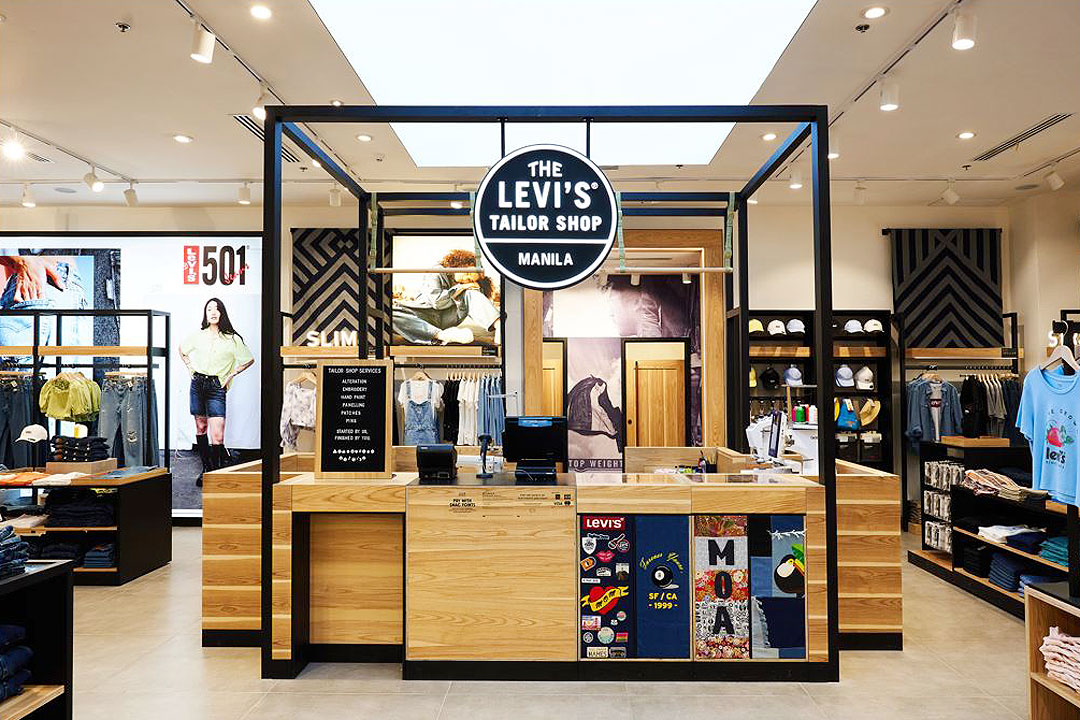Refurbishing old jeans is one way to be sustainable

Levi’s new flagship store offers hand-painting, pins, patches, and embroidery to make the old look new
FANCY a pair of hand-painted jeans? At Levi’s new flagship store at the SM Mall of Asia, one can have any old Levi’s outfits (jackets included) refurbished, either with digital embroidery, painting, pins, and patches.
The tailor station at the store that does this is one of several around the country, but the one in the Mall of Asia flagship is the only one that offers hand-painting and embroidery. Refurbishing old Levi’s is a way for the company, founded in 1873, to prove its sustainability goals, as part of a campaign called Buy Better, Wear Longer.
Marielle M. Ardiente, VP for Marketing and Customer Experience for Signature Lines, Inc. (which distributes Levi’s in all the SM stores in the country) said, “Levi’s has efforts to, as much as possible, keep your clothes as long as you can.” She pointed out that her own jean jacket was about four years old, and has steadily grown its own collection of patches and pins, during the opening earlier this month.
“Foot traffic has already returned to its pre-pandemic levels,” she said, in response to a question about opening a flagship store in the (hopefully) last days of the pandemic.
These are not the only sustainability measures that the company has since adopted, in light of pollution, climate change, and other issues. Ms. Ardiente pointed out that the Fresh line is dyed in pale pastels made with plant-based dyes.
The official Twitter account of the United Nations posted that “10,000 liters of water are needed to make a single pair of jeans.”
“By shopping 2nd-hand, buying eco-friendly clothes & donating what you no longer use, you can reduce the environmental impact of your (jeans emoji) & protect our (planet Earth emoji),” the tweet continued.
Mindful of this, Levi’s has released a line called Waterless (styled as Water<Less). Its website says that the initiative came from people looking for the rugged, beat-up look for jeans, achieved with stonewashing and other techniques. “Sometimes we simply use a thimble of water and a bit of ozone instead of detergent. To get a soft feel typically achieved by using fabric softener, we might tumble jeans with bottle caps and golf balls, taking the water out of the wash altogether. The end result remains the same: the jeans you love made by using less water.”
On another note, Ms. Ardiente points out that Levi’s 501’s use organic cotton. She noted, “The younger generation is very, very particular with the companies that have sustainability as a value.”
Levi’s was founded in 1873 by immigrant Levi Strauss and his business partner, Jacob Davis, who both patented denim work pants with copper rivets, suitable for miners in California — the company is gearing up to celebrate its 150th anniversary. Since then, blue jeans have entered popular culture as a chameleonic piece in anyone’s wardrobe: a good pair can make one look cool, hardworking, casual, or sexy. The late Vogue editor Diana Vreeland pronounced: “Blue jeans are the most beautiful thing since the gondola.”
In those 150 years, the whole world has picked up on jeans, and any clothing company worth their salt has sold at least a pair. How does Levi’s keep its edge still? “Basically, they’re the inventor of denim (jeans),” said Ms. Ardiente. “In terms of the design, construction, durability and the trust in the brand — when you say Levi’s, they know it’s going to last.” — Joseph L. Garcia



